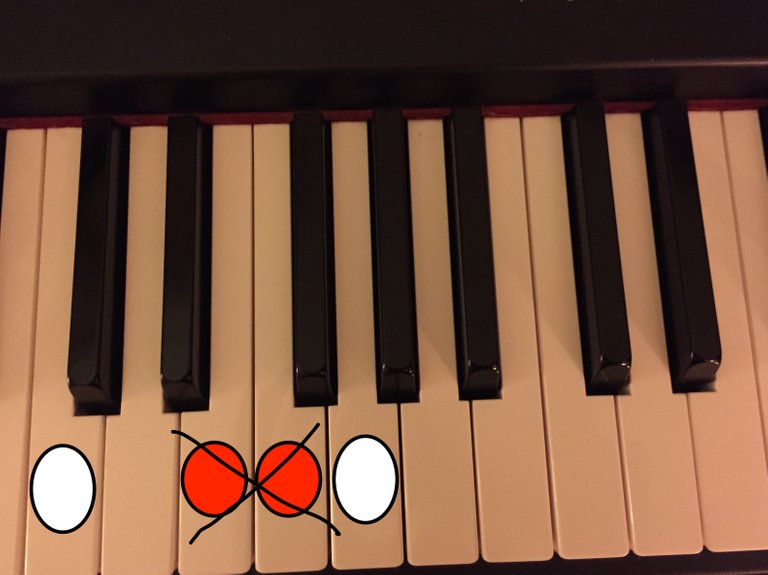
Anyone who has been through musical training will encounter this rule: Never combine the 3rd and 4th in a chord.
What does "third" and "fourth" mean? It means the third note in the scale and the fourth note in the scale at the same time.

This is okay! It's a normal major chord in C. If you look at far left white key marked by an oval and continue to count only white keys, stopping once you count to 8, then the key you land on should match the key you started on. These are all the notes in this scale.

This is okay, too! Notice how the middle oval has moved over one white-key to the right. This is a normal suspended chord. Typically in music you will hear the middle note either as the 3rd note in the scale (previous example) or the 4th note of the scale (current example).

This is the harmony that we are taught to avoid. We are taught that playing the 3rd and 4th notes of the scale at the same time (marked by red ovals) leads an unpleasing sound.
Academics say these notes clash with each other; however, I am going to show you two hit songs that break this rule.
Ben folds plays a figure that uses these "clashing notes" beautifully. Brick is Ben Folds Five's biggest hit in the history of their band.
Seven Bridges Road is a fan favorite for Eagles followers. It was originally penned by Steve Young in 1969. Ian Matthews then composed a new arrangement of the song showcasing 5-6 part harmonies. The Eagles later took this exact arrangement and began using it to open their live concerts. It is a perfect song to demonstrate their tightness as a group of singers.
I hope you have enjoyed learning about these two popular songs that break the rules and use the one harmony you must never play in music.
I certainly hope you don't ever look for a tasteful way to use this harmony in your music ;)